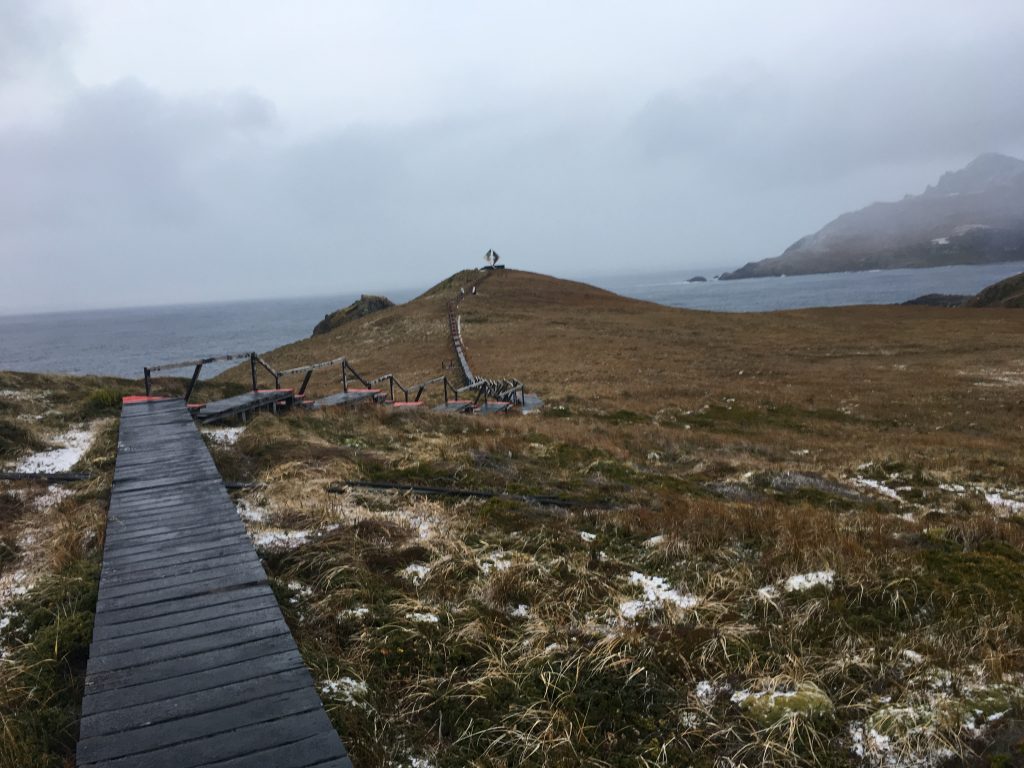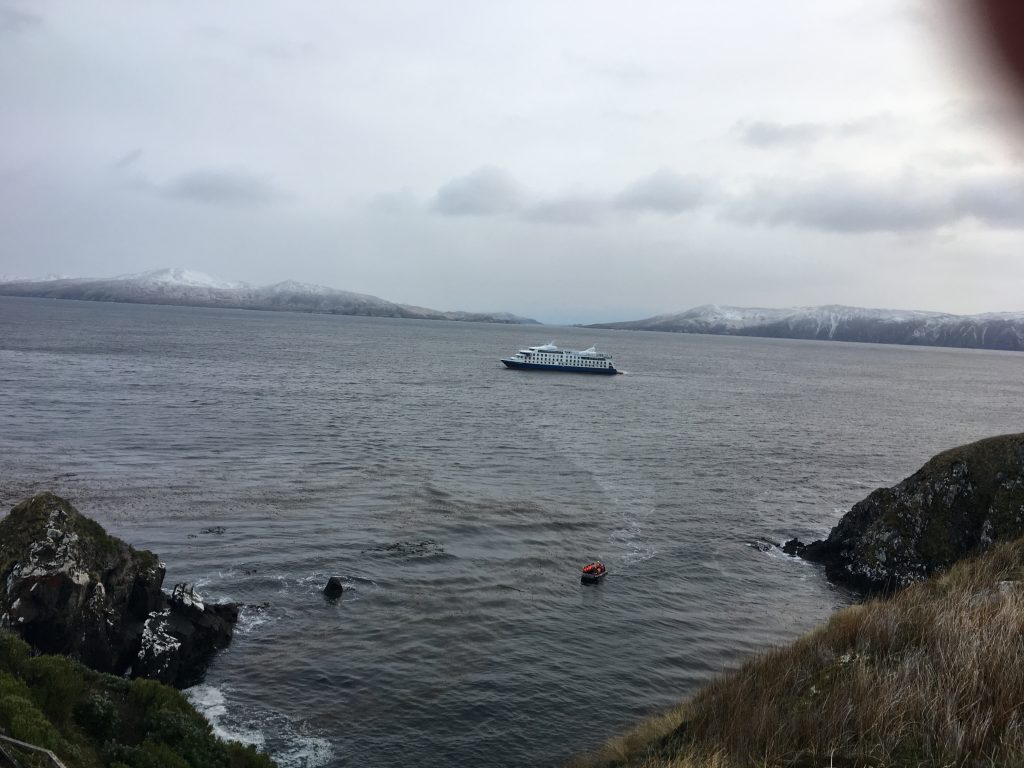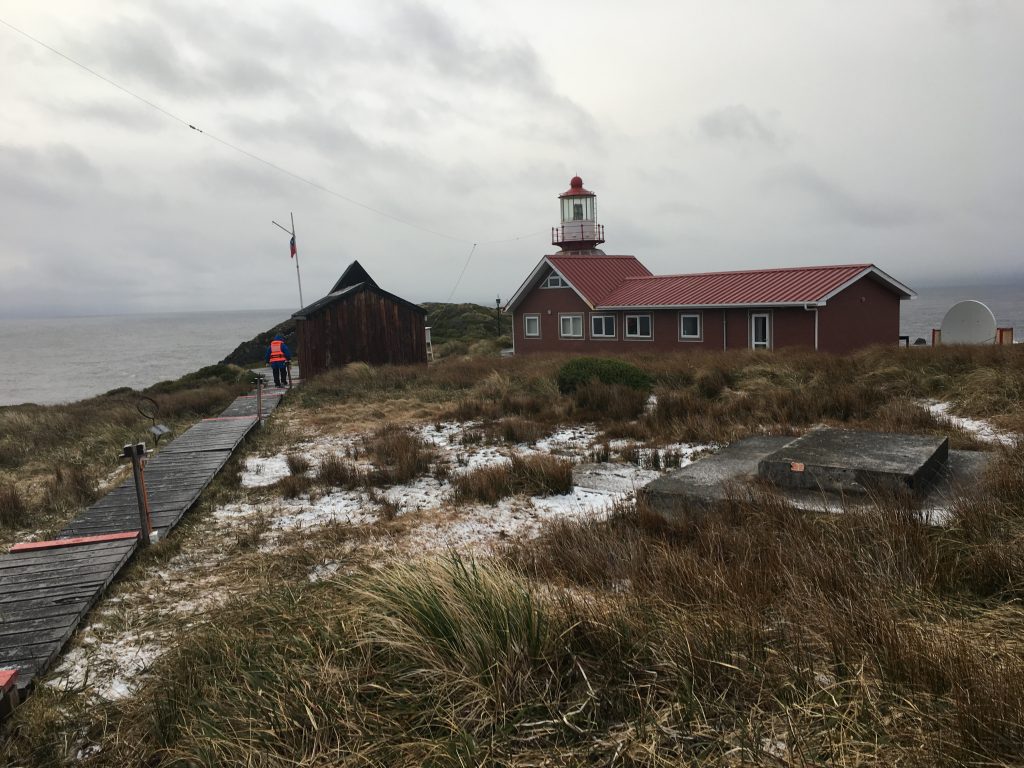
Our marketing manager, Kit, has returned from a sublime trip to Patagonia, here he shares his experience of landing on Cape Horn.
Bleary-eyed and half asleep, I rushed to put on my warm socks, waterproofs and lifejacket and headed for the stern of the Ventus Australis where the zodiacs were boarding. Opening the door from the warmth and comfort of the ship I was hit square in the face by the crisp morning air.
Hanging the metal tag from my lifejacket on the board (a clever system to keep track of who was off the ship), I sat down on the Zodiac’s black rubber tubing, grinning from ear to ear at my fellow travellers. It wasn’t long before we were skimming across the still waters of the Drake Passage towards a wooden staircase perched on the side of a distant cliff.

Landing on the small beach at the foot of it, I raced up the steps two at a time, leaving my fellow passengers in my wake. Halfway up, I bumped into a friendly face coming in the opposite direction. Immaculately dressed in a black Naval style uniform my first thoughts were ‘Why isn’t the captain on the ship?’ It was as we shook hands and exchanged greetings that I realised this wasn’t the captain after all, but rather the Lighthouse keeper at the end of the world who had come down to welcome his visitors to Cape Horn.
Saying hasta luego to my new acquaintance, I galloped up the final steps. Where the Cape finally came into view for the first time and what a wonder it was. A great black mass of Jurassic rock rising from the Ocean. From this small, windswept island, the Andes, the world’s longest mountain range and South America’s backbone stretch north for nearly 4,500 miles to the Caribbean.
The Southernmost of the Great Capes, Cape Horn separates the Atlantic from the Pacific and it is home to some of the most treacherous waters on the planet. The winds here known as the ‘roaring 40s and furious 50s’ swirl around the Southern Ocean uninterrupted by land. The rough seas and rocky coasts have claimed more than 10,000 lives and 800 ships in the last 400-years. It is said that if you see an albatross it represents the soul of a mariner who lost his life attempting to round the Cape, it seems fitting that the monument on Hornos Island is two large sheets of metal with the shape of an Albatross cut-out between them.
The hazard to shipping here hasn’t ended, though the traffic around the cape has been greatly reduced since the opening of the Panama Canal in 1914, the lighthouse keeper is responsible for the wellbeing of thousands of tourists who navigate across the Drake to Antarctica as well as the countless ships which are too large to pass through the canal, not to mention hardy around the world sailors who follow the clipper route of old, but the real reason for the continued manned Chilean Naval presence on the island may lie in the historic rivalry between Chile and Argentina, the latter of which has staked a claim to Cape Horn in the past.

The lighthouse keeper is stationed with his family on Hornos island for one year at a time, cut off from the outside world, he is responsible for the education of his daughters who must pass their exams without the luxury of Wi-Fi and internet. The only visitors they receive are in the summer from ships like the Ventus, during the winter months when the weather worsens these visits cease. It’s hardly surprising that the remoteness of this lighthouse and others like it during the darkest times of the year, inspired Jules Verne to write his book the Lighthouse at the End of the World.
The lighthouse itself is a modest affair, should you be lucky enough to make the landing you will get the chance to chat with the keeper and look around the structure. There is also a chapel on the island where it is possible to get married, though when I visited a ceremony hasn’t been performed for a few years.
After our landing on Cape Horn, we returned to the Ventus on the Zodiacs, by this point the waves were starting to pick up, this made getting off the zodiacs more challenging. It was not hard to see why the landing on Cape Horn can’t be guaranteed.
After drying off, it was time to visit the Patagonia Dining Room the on Deck 1 where we could tuck into a delicious breakfast buffet and share stories about our adventure.
Fantastic blog!